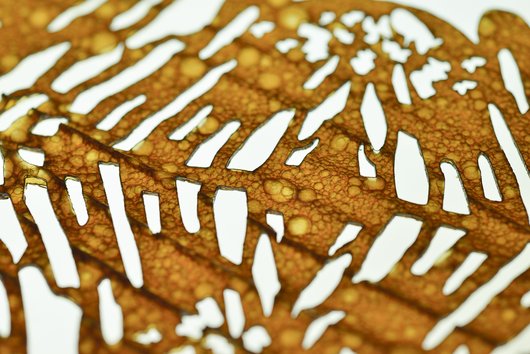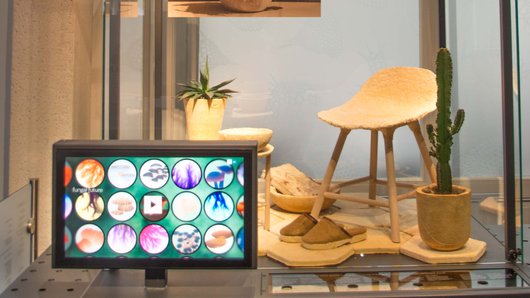A fungal future
 The invisible world
The invisible world
Everyone knows them from mouldy bread and decomposing trees. But few people know that fungi are also the perfect material from which to make all kinds of objects. Artist Maurizio Montalti and Utrecht University have developed a method that harnesses fungi’s biological vigour to make a range of sustainable substitutes for traditional and oftentimes environmentally-unfriendly products. A new display at Micropia offers a glimpse into the possibilities of mycelium.
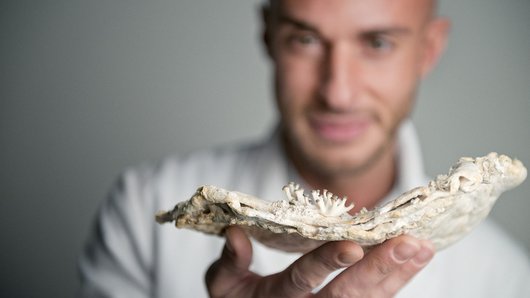
Fungi are nature’s way of breaking down organic material, from fallen leaves and dead animals to the apple core you flicked into the bushes today. Fungi are mostly made up of a mycelium – a network of fungal threads (called hyphae) so tiny that they’re invisible to the naked eye. This means fungi are a micro-organism. Sometimes, however, this network of threads grows so dense that it turns into a visible, furry mass. Like on mouldy bread. Fungi grow on their food, usually organic material. By secreting enzymes, they break down sugars in the material so they can use it as a source of food. The fast pace at which they do this plays a vital role in how things get recycled in our ecosystem.
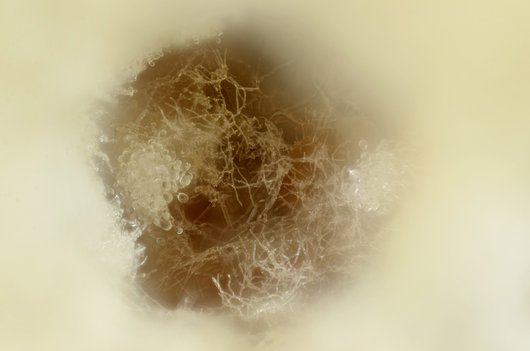
The Italian artist Maurizio Montalti saw the hidden potential in this fungal vigour. When a mycelium has spread throughout an organic substance, it results in a very solid yet lightweight material. Working with a team led by Utrecht University Professor of Microbiology Han Wösten, Montalti was able to develop a controlled method to grow fungi on all kinds of materials. By pairing different cultivation methods and fungus species, Montalti has already managed to create a range of objects with some very unique characteristics, from soundproof tiles, fire retardant insulation panels and waterproof vases to lightweight chairs, shoes and lampshades.
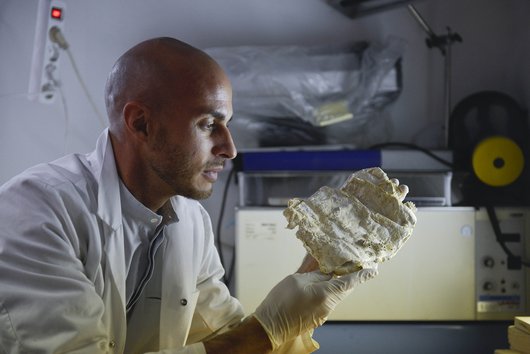
Among the species of fungus with the most applications for Montalti’s process is the well-known oyster mushroom (Pleurotus ostreatus). Oyster mushrooms grow best in damp spots and live mainly off dead plant material. These conditions are replicated in the cultivation process. Montalti uses a mix of food for his fungi, including wood chips and hay. After soaking in water and sterilising it, the food source (called the substrate) is ready to be inoculated with a small piece of the fungus. Its threads then grow through the substrate, tightly binding the fibres. Effectively, the fungus acts as an all-natural glue. And with the use of a template, it can be shaped into almost any form. After about two weeks, the resulting form is fired in an oven. This halts the growth process and prevents the fungus from eventually decaying the whole object.
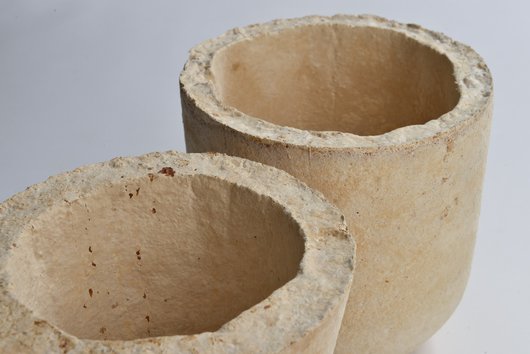
Montalti uses mostly agrarian waste for his substrates, which he turns into valuable products that are 100% natural and completely biodegradable. That makes them a perfect fit with the idea of the Circular Economy. Together with microbiologists at Utrecht University, the artist is currently working to gain a better understanding of and optimise the underlying processes. Already, the material’s applications have gone beyond art to a potential replacement for wood, rubber, paper and even plastic, as a sustainable solution to the polluting products and production processes used today. Could fungi be the material of the future?
